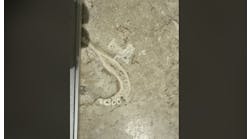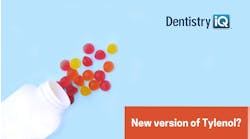Have you ever had a hopeless day, one where your oral hygiene spiel just isn't working? If you’re burned out and out of tempting hygiene tips for your patients, keep reading.
As a mom, RDH, wife, and artist, I have many jobs. It’s hard to keep everything inside the lines. Surprisingly though, when you loosen your grip on conventional ways, things go just fine, and sometimes better than you expected. So, what happens when you look outside the lines of brushing and flossing and consider a new approach to hygiene? What would that look like?
Well, when my six-year-old doesn’t feel like brushing, I give her an apple. Why? For the fiber. The act of chewing removes plaque. Mastication and stimulation of the oral cavity is part of maintaining oral and overall health. What if she wants a piece of candy or fruit? I give her cheese. It’s about balance, specifically balancing our pH.
When it comes to advising your patients on oral hygiene, ask them what they’re eating, and ask this just as often as “When are you brushing?” When it comes to habits, we should get into the habit of discussing the pH of our foods while keeping in mind that adding something rather than taking something away can be helpful.
A long list of to-dos from the hygienist can be hard for patients to stomach, not to mention a “treatment plan” from their dentist. Dental needs may come second to keeping their job and supporting their family. Which leads me to a crucial step in hygiene.
Asking your patients’ occupations can give you an answer to plenty of their dental symptoms. For instance, anyone in customer service talks a lot. Usually if someone talks a lot, their mouth gets dry, they build up more tartar, and they’re more prone to caries. These are our dry mouth patients, and we know what to do for them!
You might also be interested in:
Communicating with patients about dental lasers: What NOT to say
Communication strategies to help disheartened parents try again
Every patient is different
We need to remember to approach each patient a little differently. Consider a patient with recurrent crowns. Bruxism is obviously at fault, but are they sleeping well or might they have undiagnosed sleep apnea? Do they work a night shift or are they under a lot of stress? Are they a bodybuilder or do they lift weights often?
If occupation and habits take center stage in our quest for a different approach to hygiene, where do our traditional methods fall? They should be in the forefront. Brush, floss, rinse. Rinse? My whole life my dentist told me to brush and spit out the excess but … wait for it ... don’t rinse. I don’t rinse, and outside of the obviously unregulated amount of fluoride I might ingest, I don’t have any cavities. I know this is undocumented, unproven, and even a little outside the lines, but all old ideas are made new again simply by discussing them.
Every patient is different. A custom approach to hygiene is required, parallel to the standards of care we pledged to diligently uphold. Perhaps there are even more of us who are thinking outside the lines than we want to admit. This is all in an effort to get our patients to a point where they can maintain optimal oral health and get back to enjoying their lives.






